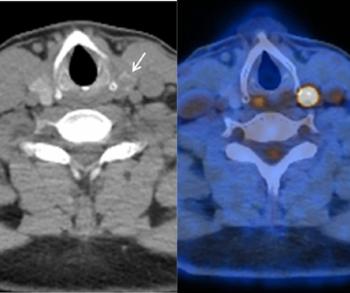
MRI-Derived Score Helps Determine Renal Mass Growth Rate
The clear cell likelihood score can help providers determine the growth rate of masses that could be cancerous.
Using MRI to non-invasively capture a clear cell likelihood score (ccLS) can help providers better determine how quickly small kidney masses are growing. With this knowledge that can make better decisions about management strategies.
In a study published July 22 in the
ccLS scores are used to assess the likelihood that a small renal mass (equal to or less than 4 cm) is actually cancer with a score of 1 being unlikely and a score of 5 being very likely. The team, led by Ivan Pedrosa, M.D., Ph.D., professor of radiology and vice chair of radiology research, found that, based on their evaluations, higher ccLS scores correlate to more significant growth rates.
“The ccLS of small renal masses is significantly associated with growth. ccLS4-5 small renal masses grow more rapidly than ccLS1-2 and ccLS3 small renal masses,” the team said. “The information provided by ccLS may be beneficial in counseling patients and planning personalized management strategies.”
This is the first study, the team said, that examines the correlation between ccLS and small renal mass growth.
For their retrospective study, the team evaluated ccLS scores derived from MRI scans conducted on 339 patients with an average age of 65 between June 2016 and November 2019. They examined tumor size measurements and tumor progression.
Overall, the team looked at 386 small renal masses. They determined that ccLS was correlated with growth rate by size – ccLS4-5 of 9 percent annually and ccLS 1-2 by 5 percent annually – as well as by volume – ccLS4-5 by 29 percent annually and ccLS1-2 by 16 percent annually.
“Our study supports the conclusion of the more aggressive faster-growing nature of ccLS4-5 small renal masses. This…favors our recommendation of disease intervention in larger ccLS4-5 masses, in consideration of the patients’ clinical context and preferences,” the team said. “The results support the use of the ccLS as an ‘informational tool’ to assist with clinical decision making.”
In that vein, the team said they created an online calculator that patients and treating providers can use when making management decisions, helping them consider the likelihood of tumor growth in context with the patient’s life expectancy and co-morbidities.
For more coverage based on industry expert insights and research, subscribe to the Diagnostic Imaging e-Newsletter
Newsletter
Stay at the forefront of radiology with the Diagnostic Imaging newsletter, delivering the latest news, clinical insights, and imaging advancements for today’s radiologists.




























